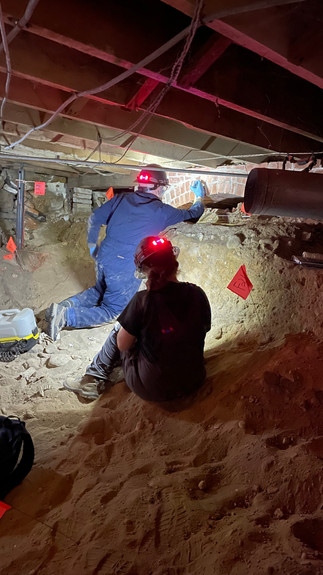The Changing Landscape at Sylvester Manor
- Laura Paisley

- Dec 13, 2024
- 2 min read
Updated: Jan 22
Sylvester Manor’s site complexity and density have been highlighted by UMass Boston archaeologists for the last 25 years. The core of the archaeological site, and the focus of much of the scholarship of Sylvester Manor thus far, is located on the lawns south and southeast of the standing house. One of the initial goals of the archaeology that began in 1998 was identifying the location of the first Sylvester Manor house built in 1652. This structure would have been built for Nathanial and Grissell who lived there until the 1680s. However, beginning in 1686, when Giles Sylvester inherited the property, Sylvester Manor entered a period of tenant occupation where the property was managed by the Sylvesters off-site. This changed in 1708 when Brinley Sylvester inherited the property and worked to modernize and restore the estate.
This modernization and restoration resulted in massive re-landscaping, including the destruction of the original 1652 Manor house. Archaeological investigations have not definitively found the footprint of the Manor house but have found extensive deposits relating to the living and work space of European, African, and Indigenous individuals who resided on the property. From 1652 to 1686, the Manor’s purpose was to serve as a provisioning plantation to provide goods to two sugar plantations in Barbados. The archaeological record shows the industrial nature of the site during this time with very dense deposits that suggest living and working activities happening very close to each other. The re-landscaping events during Brinley Sylvester’s occupation masked this past industrial landscape, following the family’s disengagement with Barbadian plantations. This is evident in the discovery of cobbled surfaces found underneath the current Manor house in our excavations last spring. In the 18th century renovations, working and living spaces were separated, making Sylvester Manor more attractive to Georgian high society and more economically focused on local industries.
Photos
1 & 2: Excavation on the South Lawn
3: Basement excavations in Spring of 2024









Comments